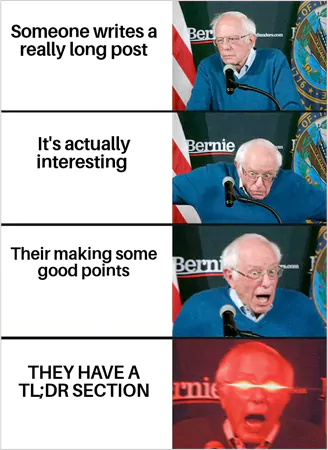TLDR is a popular internet abbreviation that stands for ‘Too Long; Didn’t Read’, generally used for introducing the summary of a longer text.
Decoding Gen Z slang is anything but easy. Yesterday, my 12-year-old said, ‘TLDR mom, can you sum up the camp pointers!’
I was all stunned, wondering what he meant. After a dig on the web, I got to know TLDR is a shorthand for ‘Too Long Didn’t Read.’
It took me a moment to digest how language has evolved. So, if you’re a millennial parent trying to figure out the fancy acronym lingo of today’s generation. I’ve got your back!!!
Read here for a detailed breakdown of TLDR meaning, learn where and how to use it, and see how appropriate this term is for children.
TLDR is a modern-day internet acronym for ‘Too Long Didn’t Read’ and is generally used for summarizing lengthy content. It’s more like an executive summary on top of a report, study, emails, and news articles.
This phrase is particularly used online in dense articles, posts, or reports, and you may also encounter another version with a semicolon: TLDR. Due to its informal usage and casual tone, this phrase is highly popular in Gen Z, and you can encounter many TLDR memes online.

The TLDR meaning might sometimes come across as rude if not used in the right context and correct setting. So knowing ‘what does TLDR stand for’ won’t be beneficial if you don’t know where and how to use it.
Hence, navigate to the subsequent section to learn about its correct usage.
TLDR meaning is very casual and is appropriate for informal settings like social media, get-togethers, group discussions, etc. This acronym is typically used in connection with a long post or message to request a quick summary of the text.
One can use TLDR in,
Example: Just shared my long journey as a writer. TLDR, it’s tough but totally worth it.
Example: TLDR: Update and refresh your app to fix the crashing issue.
The phrase TLDR meaning is used in several ways. Here’s how you can use it in your daily conversation!
Ideally, one should avoid using TLDR in a formal setting like school and offices, as it is a very casual phrase and might have a dismissive tone in formal places.
These are a few better alternatives to TLDR, which are more appropriate for formal settings:
With Gen Z entering the mainstream workforce, this phrase is also gaining traction in corporate lingo and formal settings. So having a knowledge of ‘what does TLDR stand for?’ will definitely come in handy while working with this advanced generation.
Yes, it is a safe acronym for children. TLDR means ‘Too Long; Didn’t Read’; however, the context in which this phrase is used really matters!
Here are a few things that you must consider if your little fellow is using TLDR in daily conversation!
TLDR meaning is helpful and a shortcut, especially for summarizing long texts. It is generally a harmless text and can be considered safe for kids; however, as I said above, context matters, and you should teach your child not to use it in a formal setting like school or a competition.
In the right context, TLDR is a fun acronym for communication in today’s digital world!
TLDR is a popular internet abbreviation that stands for ‘Too Long; Didn’t Read’, generally used for introducing the summary of a longer text.
TL;DR is not used in formal settings. One can either write it before a brief summary of a long text to ask for a summary of someone else’s long text.
On social media, the term TLDR means ‘Too Long; Didn’t Read’ and is used for giving a preface of a brief summary of their own long post.
In texting also TL;DR means ‘Too Long; Didn’t Read.’ A girl or boy can use this phrase to ask for a concise response to a long text.
Yes, TLDR is quite a popular abbreviation among Gen Z.
